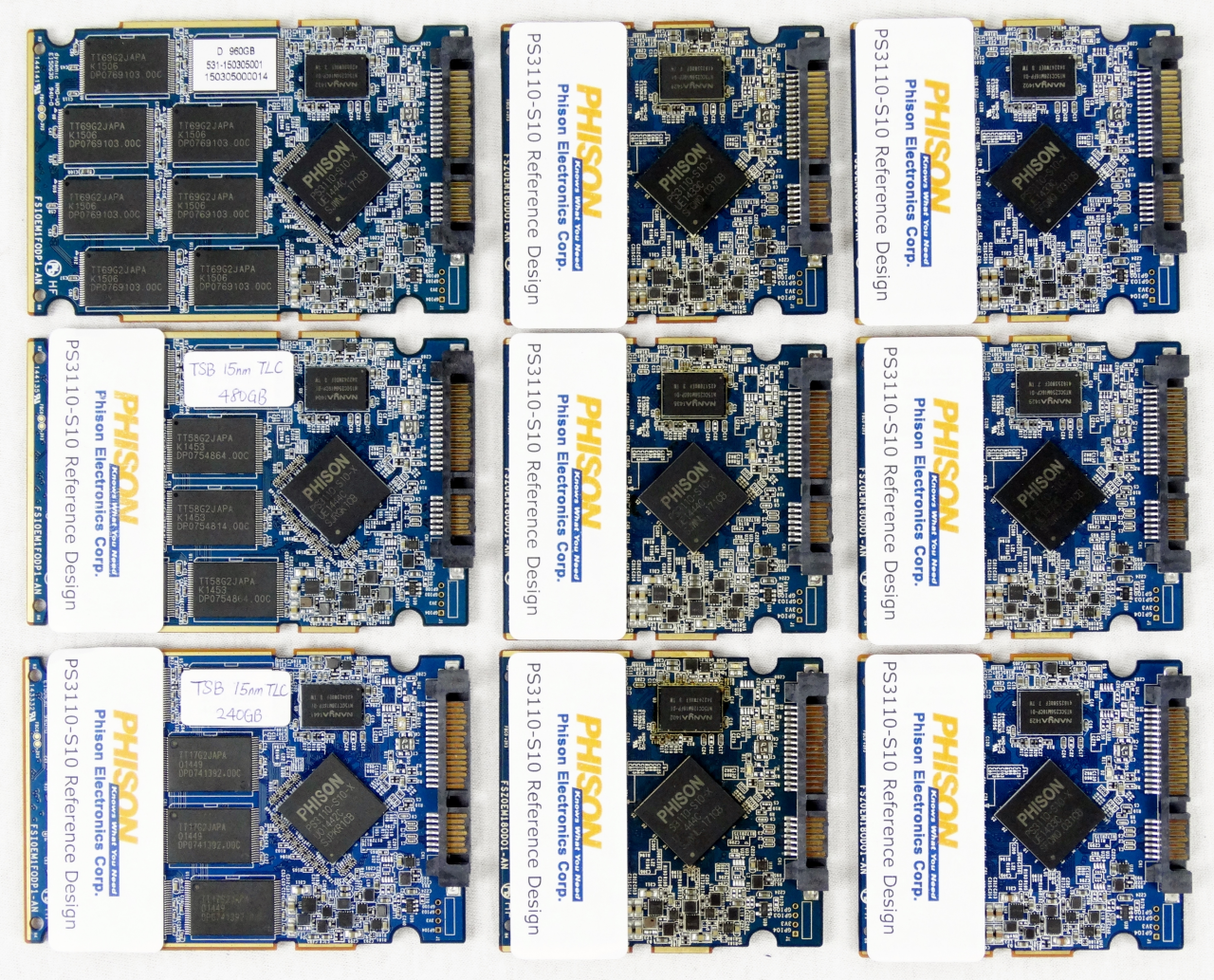Phison S10: Toshiba MLC And TLC Versus Micron L95B MLC
Phison offered to let us test its S10 controller with three flash types that will ship in 2015: Toshiba's A19 TLC, 15nm MLC and Micron L95B 16nm MLC.
Introduction
Three components are needed for every SSD. The controller is perhaps the most talked-about piece. After all, the second element, firmware, sits on the controller side, often changing the way the processor behaves over a drive's life. The third element is flash memory, the puzzle piece responsible for holding your data. Sometimes a model will launch with one type of flash, only to be updated with new NAND as the older technology becomes obsolete.
Today we're testing three flash types on the same controller and same generation of programming. For the most part, flash is the variable. The two other significant components that affect performance are held equal. Kinda makes for a dreary-sounding article, right? To the contrary, aside from Samsung's drives, any of the SSDs you consider for the rest of 2015 and early 2016 will use the flash we're covering. And just to be certain we hit all of the important angles, we're testing across three popular capacities: 256GB, 512GB and 1TB.
You may wonder just how much difference flash makes in an SSD. That's what we're going to demonstrate. Factors like write endurance need to be considered, and we usually talk about that in product reviews since the variables tend to change over time (think increased yields and refinements to the manufacturing process). Price also plays a role. At this year's Computex, we were told that Toshiba A19 MLC currently costs around 30% more than Micron's L95B (16nm MLC). When Micron shifts production over to 3D at the end of 2015, that could change. When Micron moved to 20nm from 25nm, a shortage increased NAND spot prices and retail drive prices increased for a few months. Flash is the most expensive component in client SSDs, so it's important for us to keep a watchful eye on trends and new technology as it moves into products you may want to purchase.
MORE: Best SSDs For The Money
MORE: All Storage Articles
MORE: Storage in the Forums
Get Tom's Hardware's best news and in-depth reviews, straight to your inbox.

Chris Ramseyer was a senior contributing editor for Tom's Hardware. He tested and reviewed consumer storage.
-
James Mason Replywhoa, where did you guys get some 4800GB just for the battery life tests?
Yeah so many typos I almost thought they actually did get 5 terabyte SSDs somehow.
-
Frozen Fractal I was arranging a chart while reading this article to see who actually wins. Seems like Toshiba 15nm MLC wins the test, with Micron 16nm MLC close on tail and TLCs wayyyy off :D.Reply
It is kinda disappointing to see TLCs being outperformed so brutally. I guess increased SLC buffer should mitigate the problem? Samsung already has like this in the EVO 2TB so what do you think Chris?
Also, does lithography has anything to do with performance? I mean Micron's NANDs are close to Toshiba's MLCs and Micron's cells are just 1nm bigger than Toshiba's MLCs. Can this be co-related somehow? -
WyomingKnott It is so cool that they provided these for a head-to-head comparison. Finally, a comparison with all other variables really held even.Reply
